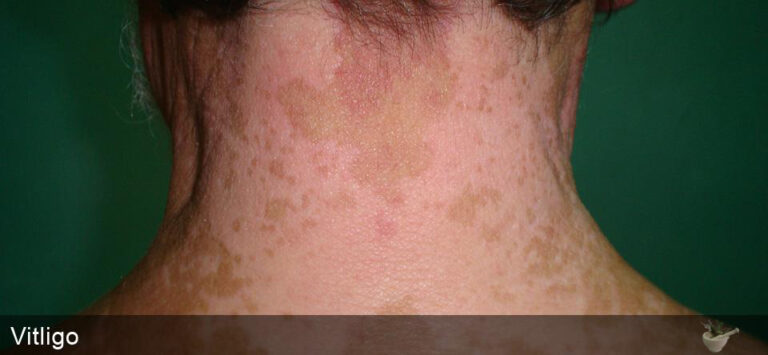Vitiligo

Vitiligo is a skin condition in which there is a loss of brown color (pigment) from areas of skin, resulting in irregular white patches that feel like normal skin.
Causes, incidence, and risk factors
Vitiligo appears to occur when immune cells destroy the cells that produce brown pigment (melanocytes). This destruction is thought to be due to an autoimmune problem, but the cause is unknown.
Vitiligo may appear at any age. There is an increased rate of the condition in some families. The condition affects about 1 out of every 100 people in the United States.
Vitiligo is associated with three other autoimmune diseases:
- Addison’s disease
- Hyperthyroidism
- Pernicious anemia
Symptoms
- Flat areas of normal-feeling skin without any pigment appear suddenly or gradually. These areas have a darker border. The edges are well defined but irregular.
- Vitiligo most often affects the face, elbows and knees, hands and feet, and genits. It affects both sides of the body equally.
- Vitiligo is more noticeable in darker-skinned people because of the contrast of white patches against dark skin.
- No other skin changes occur.
